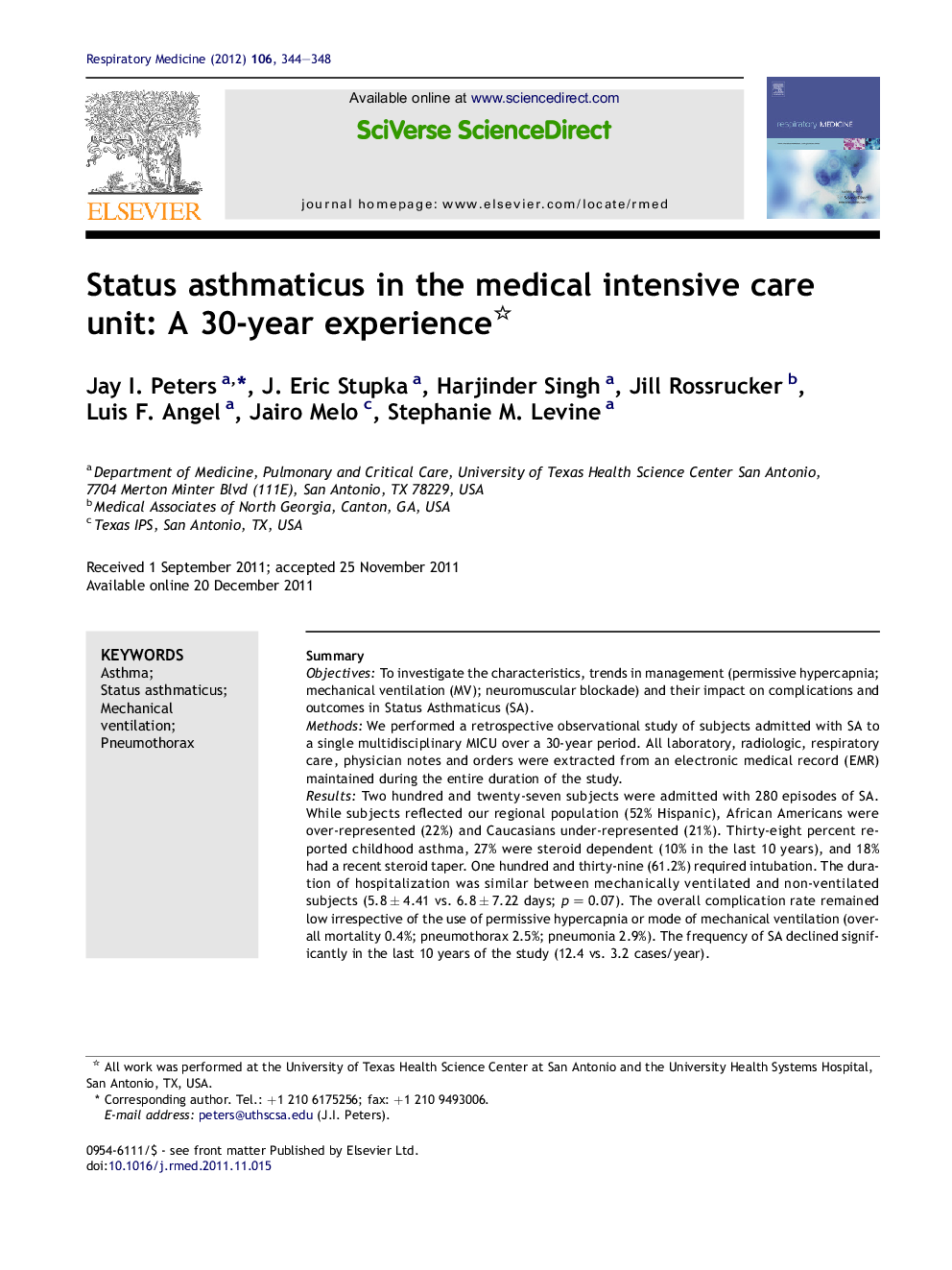| Article ID | Journal | Published Year | Pages | File Type |
|---|---|---|---|---|
| 4210532 | Respiratory Medicine | 2012 | 5 Pages |
SummaryObjectivesTo investigate the characteristics, trends in management (permissive hypercapnia; mechanical ventilation (MV); neuromuscular blockade) and their impact on complications and outcomes in Status Asthmaticus (SA).MethodsWe performed a retrospective observational study of subjects admitted with SA to a single multidisciplinary MICU over a 30-year period. All laboratory, radiologic, respiratory care, physician notes and orders were extracted from an electronic medical record (EMR) maintained during the entire duration of the study.ResultsTwo hundred and twenty-seven subjects were admitted with 280 episodes of SA. While subjects reflected our regional population (52% Hispanic), African Americans were over-represented (22%) and Caucasians under-represented (21%). Thirty-eight percent reported childhood asthma, 27% were steroid dependent (10% in the last 10 years), and 18% had a recent steroid taper. One hundred and thirty-nine (61.2%) required intubation. The duration of hospitalization was similar between mechanically ventilated and non-ventilated subjects (5.8 ± 4.41 vs. 6.8 ± 7.22 days; p = 0.07). The overall complication rate remained low irrespective of the use of permissive hypercapnia or mode of mechanical ventilation (overall mortality 0.4%; pneumothorax 2.5%; pneumonia 2.9%). The frequency of SA declined significantly in the last 10 years of the study (12.4 vs. 3.2 cases/year).ConclusionsDespite the frequent use of mechanical ventilation, mortality/complication rates remained extremely low. MV did not significantly increase the duration of hospitalization. At our institution, the frequency of SA significantly decreased despite an increase in emergency room visits for asthma.
